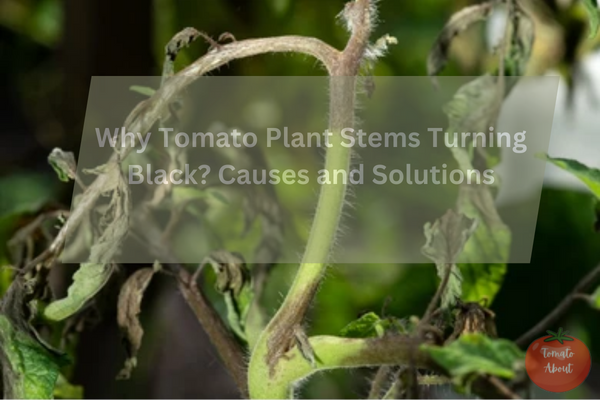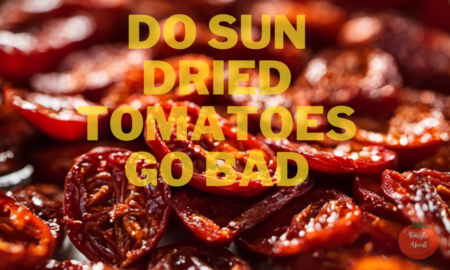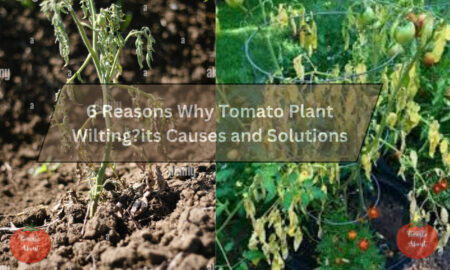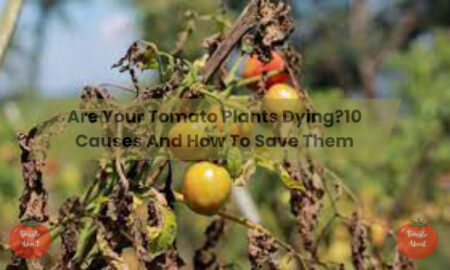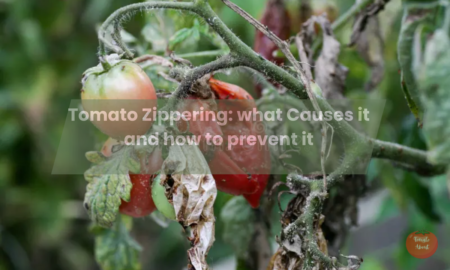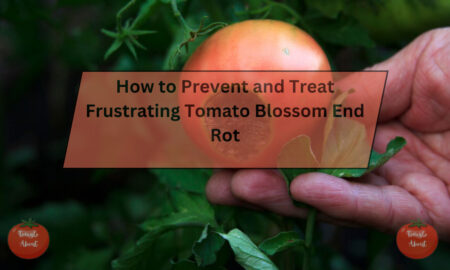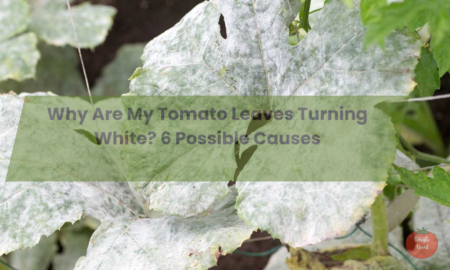Summer is the prime tomato growing season. As a tomato lover, I look forward to harvesting fresh tomatoes for sandwiches, salads, sauces, and more. But nothing is more frustrating than seeing those vines wilting and the plant stems turning black. If you’ve noticed dark spots or streaks on your tomato plant stems, it’s likely a disease is to blame.
So, what causes Tomato plant Stems to turn black?
Black spots on tomato stems are usually caused by fungal or bacterial diseases. The most common culprits are early blight, late blight, bacterial speck, fusarium wilt, and tobacco mosaic virus.
A variety of different pathogens are responsible for the black spots and streaks that can appear on tomato stems and leaves. Fungal, bacterial, and viral diseases are the main offenders. The most likely suspects behind black tomato stems include:
Early Blight
Early blight is one of the most common tomato diseases I see in my garden. It thrives in humid, warm conditions and is prevalent in many regions of the U.S. The fungal pathogen Alternaria solani is the cause. Small, dark lesions first emerge on older leaves near the ground.
As early blight progresses, the spots grow larger and black in color. Stems also develop dark streaks or circular spots. These lesions may have concentric rings giving them a target-like appearance. Defoliation can occur from the bottom up as the disease takes over.
Late Blight
While early blight infects plants earlier in summer, late blight arrives later, as its name implies. The fungus Phytophthora infestans spreads rapidly under cool, wet conditions.
In my experience, late blight can quickly defoliate tomato plants. Leaves develop greasy-looking, brown spots which spread to stems. Entire vines can turn black and shrivel up. Rainy seasons provide ideal conditions for devastating late blight infections.
Bacterial Speck
Another possibility for black tomato stems is bacterial speck caused by Pseudomonas syringae pv. tomato. Small, dark-colored specks show up on leaves, and black lesions erupt on stems and veins. The bacteria thrive in cool, moist environments.
Fusarium and Verticillium Wilts
These soil-borne fungal diseases infect plants through the roots and gradually cause wilting. Leaves yellow, then brown, and die. The pathogens (Fusarium oxysporum and Verticillium dahliae) block water transport in the vascular system, sometimes causing dark streaking on stems. Entire plants eventually collapse and die from these vascular wilts.
Tobacco Mosaic Virus
Viral infections like tobacco mosaic virus (TMV) sometimes cause tomato stems to turn brown or black. The virus causes light and dark green mottling on leaves and stunted growth. Protecting plants from insects that spread TMV is key, as there are no chemical controls.
Figuring out exactly which disease is plaguing your tomato plants takes careful examination. Use the descriptions above to identify key symptoms and narrow down the problem. When in doubt, consult your local extension office for an expert diagnosis.
Treating Black Tomato Stems Caused by Disease
While home remedies like baking soda or milk sprays may help suppress some fungal diseases, severe stem infections often warrant chemical intervention. Here are some treatment tips I’ve found helpful for restoring health to diseased tomato plants:
- Apply a copper-based fungicide spray soon after spotting symptoms to limit the disease’s spread. I’ve had success using Bonide Copper Fungicide. Copper compounds inhibit the growth of fungi and some bacteria. Always follow label directions.
- For late blight, try a fungicide containing chlorothalonil. Bonide Fung-oil Multi-Purpose Fungicide is a good option. This active ingredient provides better control for downy mildew fungi than copper.
- Disinfect gardening tools with a bleach solution to avoid transferring pathogens between plants. I fill a bucket with a 10% bleach solution to dip my tools in after each use. Rinse tools after cleaning.
- Improve airflow by spacing plants farther apart, staking, and pruning. Good ventilation allows foliage to dry out, reducing humidity that fuels fungal and bacterial diseases.
- Remove and destroy severely infected leaves and stems. This keeps spores from spreading to healthy tissue. Burn or bury diseased debris. Just be sure to sterilize pruning shears after each cut.
- Plant disease-resistant cultivars next season to avoid susceptible varieties that succumb to black stem infections. Many hybrids with genetic disease tolerance exist. Look for ‘VF’ labeling that indicates verticillium and fusarium resistance.
With quick action, I’ve been able to rescue many a tomato plant from dark lesions creeping up the stems. However, prevention is still the best medicine when it comes to plant diseases.
Preventing Diseases that Cause Black Tomato Stems
While even healthy tomato plants aren’t immune from diseases, following smart growing practices can limit problems:
Start with Disease-Free Transplants
When buying tomato transplants, inspect plants closely for signs of disease. Check for lesions or black spots on leaves and stems before purchasing. Reputable garden centers should sell only healthy plants. I look for plants with vigorous growth and no yellowing or wilting.
Disinfect Tools
As mentioned above, disinfecting pruning shears, hoes, and other tools helps avoid spreading diseases between plants. Dip tools for 1-3 minutes in a 10% bleach solution. Rinse thoroughly afterward.
Rotate Planting Sites
Rotating crops in the garden avoids a build-up of soil pathogens. Don’t plant tomatoes in the same spot as last year’s tomatoes. Use a 3-4 year rotation for tomatoes and related crops like potatoes, eggplants, and peppers. I like to keep a garden map to remember my rotations.
Water at Ground Level
Watering by hand or with drip irrigation applies water right to the soil, not leaves. This keeps foliage dry, deterring fungal and bacterial problems. Avoid using sprinklers or overhead watering. I invested in a drip system which has reduced my disease issues.
Provide Good Air Circulation
Allow adequate spacing between plants for plenty of air circulation. Crowding causes excess humidity. Also, stake or cage tomatoes to keep vines off the ground and promote airflow. I space my plants 36-48″ apart and use tall tomato cages.
Prune Off Lower Leaves
Removing leaves close to the ground helps prevent soil splash from transferring pathogens. Use a sharp pruner to cleanly detach only the lowest leaves within 6-12″ of soil. Prune lower leaves weekly for best results.
Apply Mulch
A 3-4 inch layer of mulch like straw or bark around plants is an effective disease deterrent. The barrier prevents rain splatter and keeps the fruit from contacting the soil. Organic mulches also improve soil health. I prefer using shredded bark mulch in my vegetable gardens.
Control Weeds
Weeds near tomatoes can harbor pests and diseases. Stay on top of manually or chemically removing weeds to reduce risks. My neighbor swears by using a propane weed torch! I hoe weekly and hand pull weeds too.
Check for Wild Host Plants
Some pathogens, like late blight, can overwinter on related weeds and plants in the nightshade family. Destroying wild hosts near the garden eliminates an infection source. Each fall, I clear out any nightshades growing along my fence line.
With preventative care, healthy tomato crops are certainly possible in my experience. An ounce of prevention truly outweighs a pound of cure when it comes to plant diseases!
What to Do With Tomatoes After Black Stem Disease
Even with the best care, some tomato stem infections can’t be stopped fully. Often, the disease progresses too far by the time you spot it. When this happens, salvaging whatever unaffected tomatoes you can is important.
Here are some tips for managing tomato plants after a nasty bout of disease:
- Closely monitor plants for the spread of disease and diligently remove affected parts. I inspect plants daily when disease is present.
- Harvest all mature, healthy-looking fruits so they aren’t left to rot. Prioritize picking fruits from diseased plants first.
- Dispose of diseased foliage and stems in the garbage or by burning, not in the compost pile. Wear gloves when handling infected plants.
- Feed plants a fertilizer higher in phosphorus and potassium to aid plant recovery. A tomato fertilizer with an NPK ratio around 5-10-10 or 5-10-15 works well. I use Espoma Tomato-Tone fertilizer.
- Allow adequate time before fall’s first frost for new growth. Much depends on when the infection occurred. Check your first frost date and plant maturity times.
- Assess if it is worth trying to nurse plants along or if it is better to remove them entirely and plant another crop. Large or late infections may warrant removing and replanting.
- Consider planting a late-season cover crop like buckwheat or clover in now-empty areas to improve soil health. Buckwheat grows quickly and chokes out weeds.
Even if tomato plants don’t fully rebound in the same season, you can still take steps to get your soil and garden back in shape for next year’s tomato crop.
Can You Still Eat Tomatoes After Black Stem Disease?
This is a common question when tomato plant stems become infected. The answer depends on a few factors:
- How far the disease has progressed? Catching it early allows more fruits to be harvested unaffected.
- Which disease is present? Bacterial infections make fruits more questionable to consume than fungal diseases.
- Where the infections are located. Fruits with spots or lesions shouldn’t be eaten, but ones without symptoms still offer safe eating.
- Your risk tolerance for possibly eating diseased tomatoes. Some gardeners are more wary than others!
My advice is to discard any fruits that show dark spots, lesions, or rotting. Then wash hands well after handling infected plants before harvesting from unaffected plants elsewhere in the garden. When in doubt, play it safe and compost suspect tomatoes.
Frequently Asked Questions
Can you still eat tomatoes after black stem disease occurs?
Yes, fruits without lesions or rot spots should be safe to eat. Discard any suspicious-looking tomatoes to be safe. Wash hands after handling infected plants before harvesting good fruit.
How can I prevent black tomato stems in the future?
Practicing crop rotation, sanitizing tools, watering at the base of plants, and removing weeds and debris can greatly reduce disease risk in the tomato patch.
Wrapping up!
While diseases causing black tomato stems are discouraging, all hope for tomatoes is not lost if they strike. With accurate diagnosis, prompt treatment, and preventative care, you can minimize damage and keep enjoying tomato harvests. Let me know if these tips help you rescue your tomatoes from black stem issues this year.

